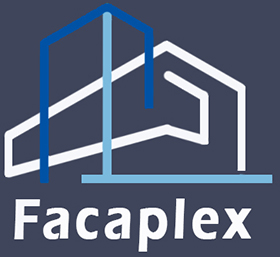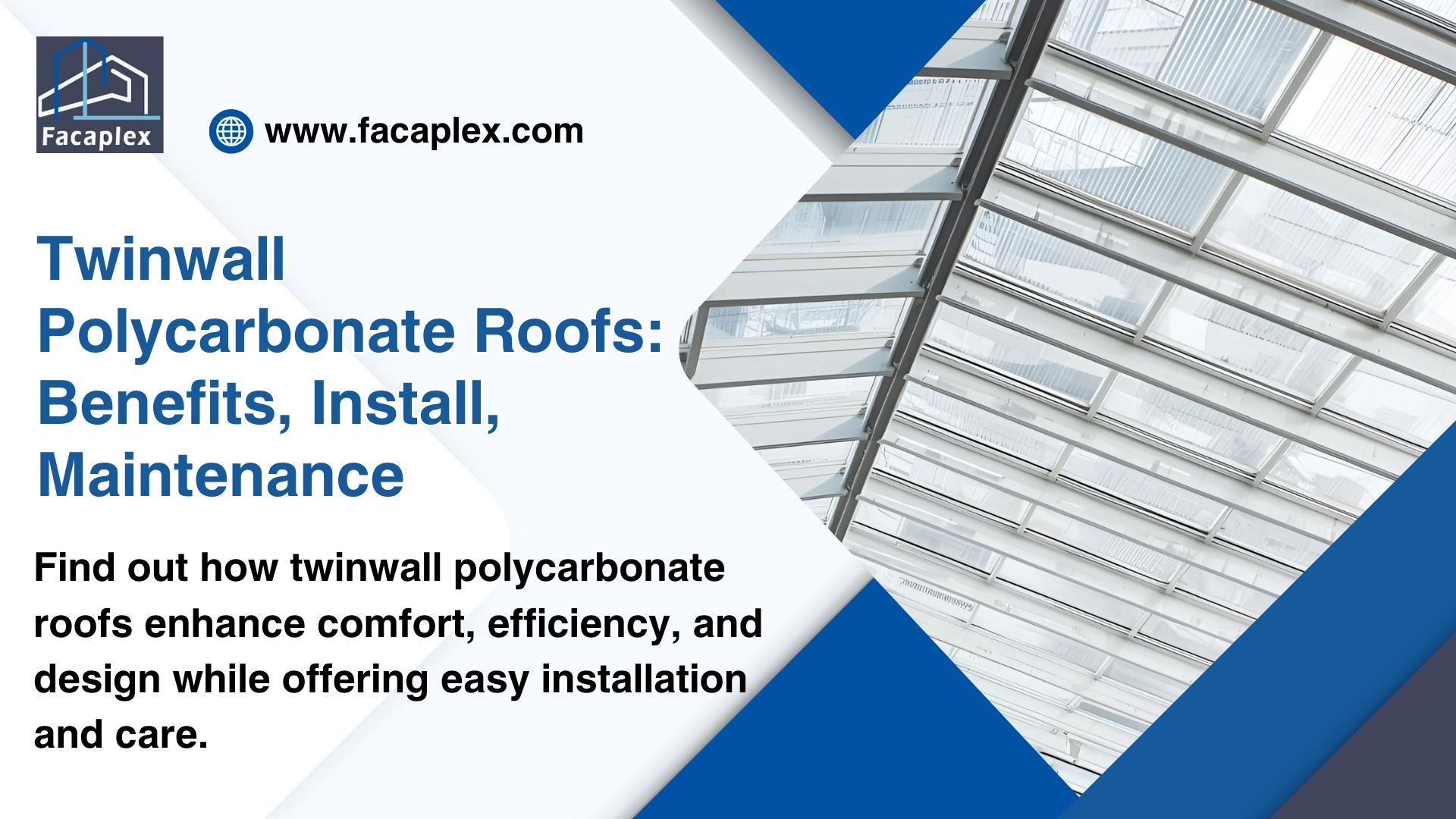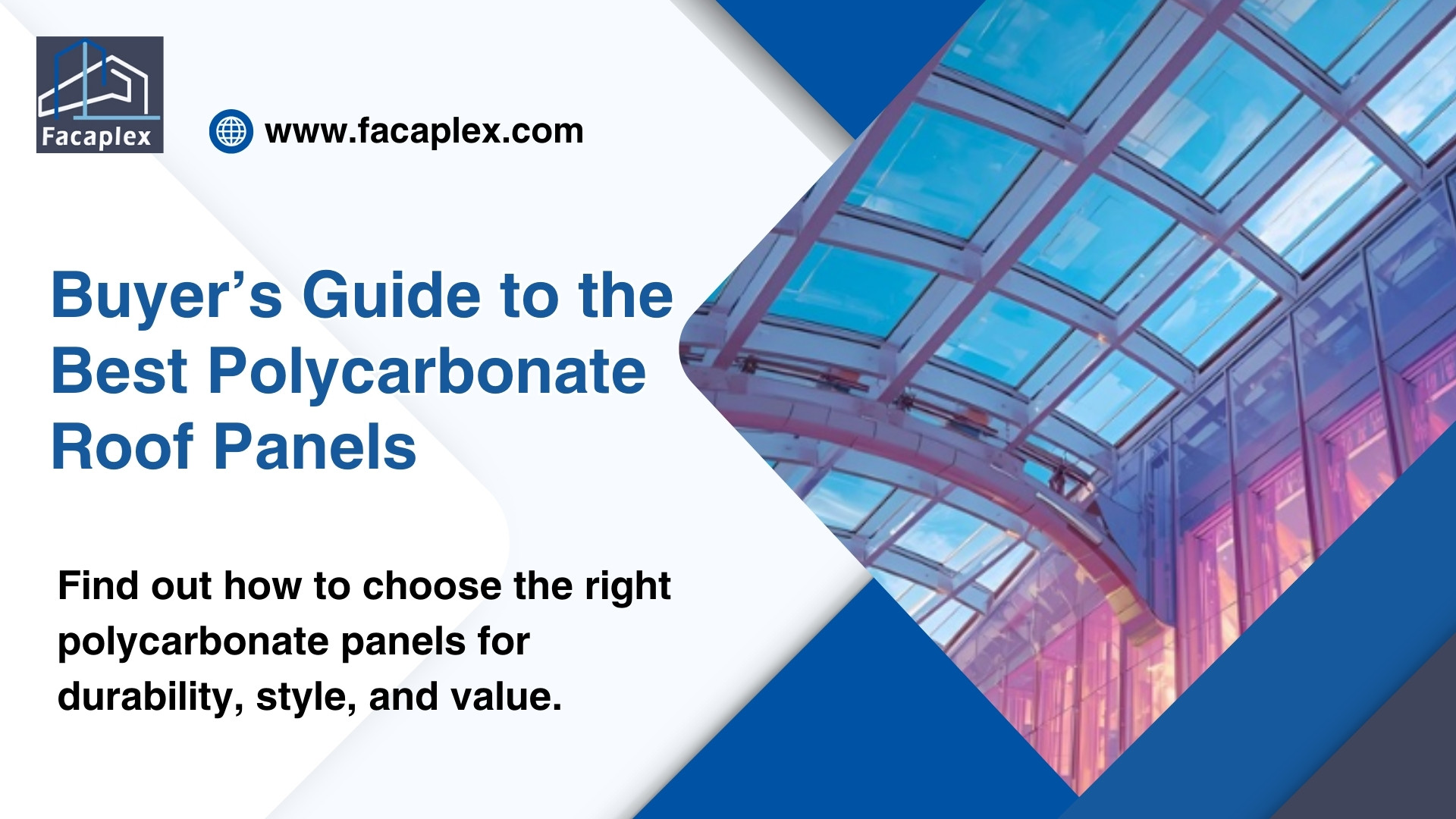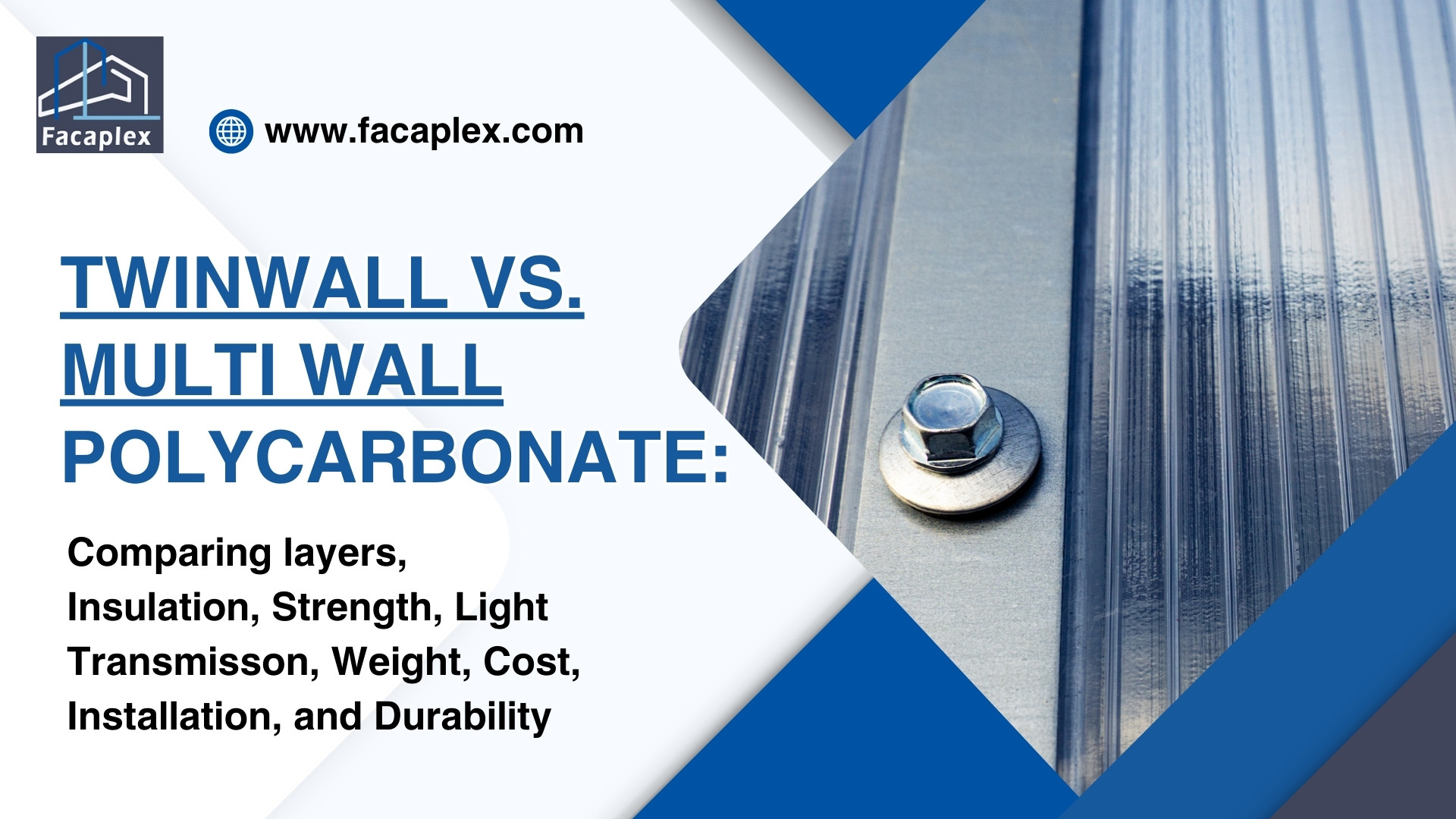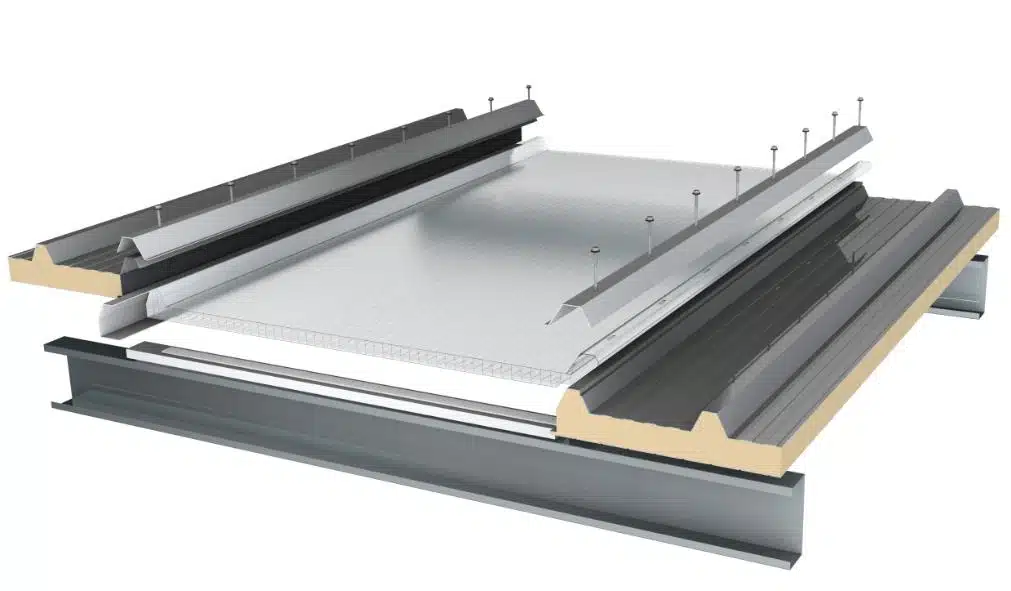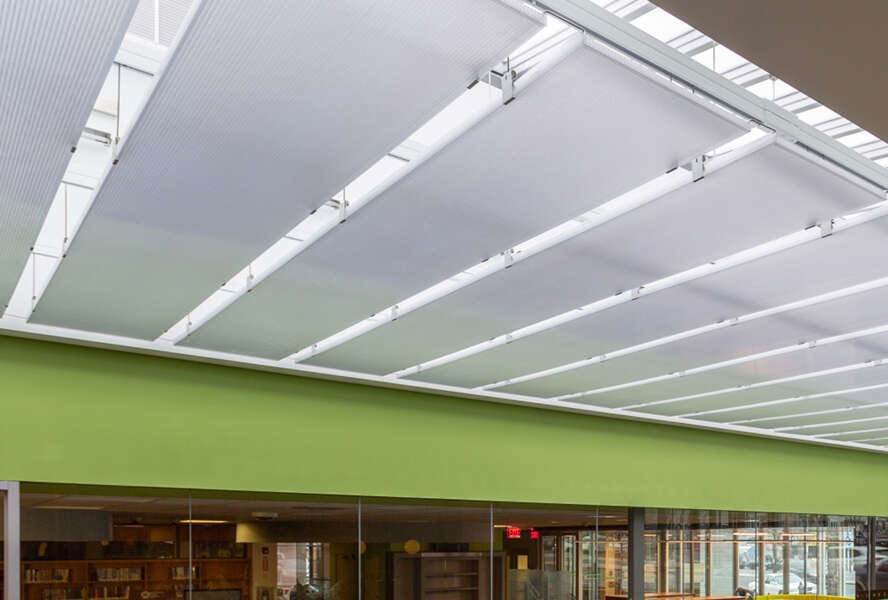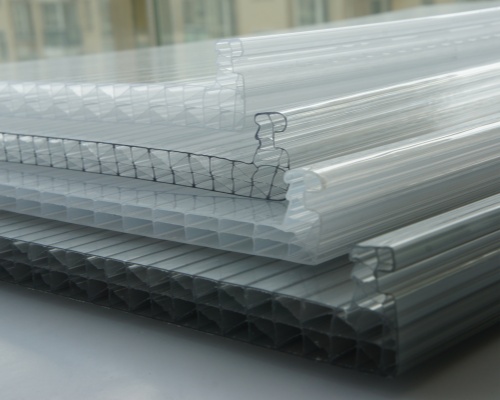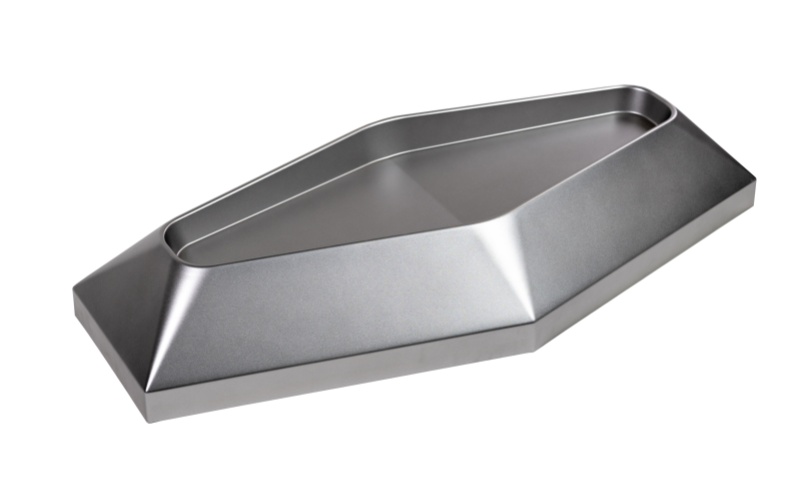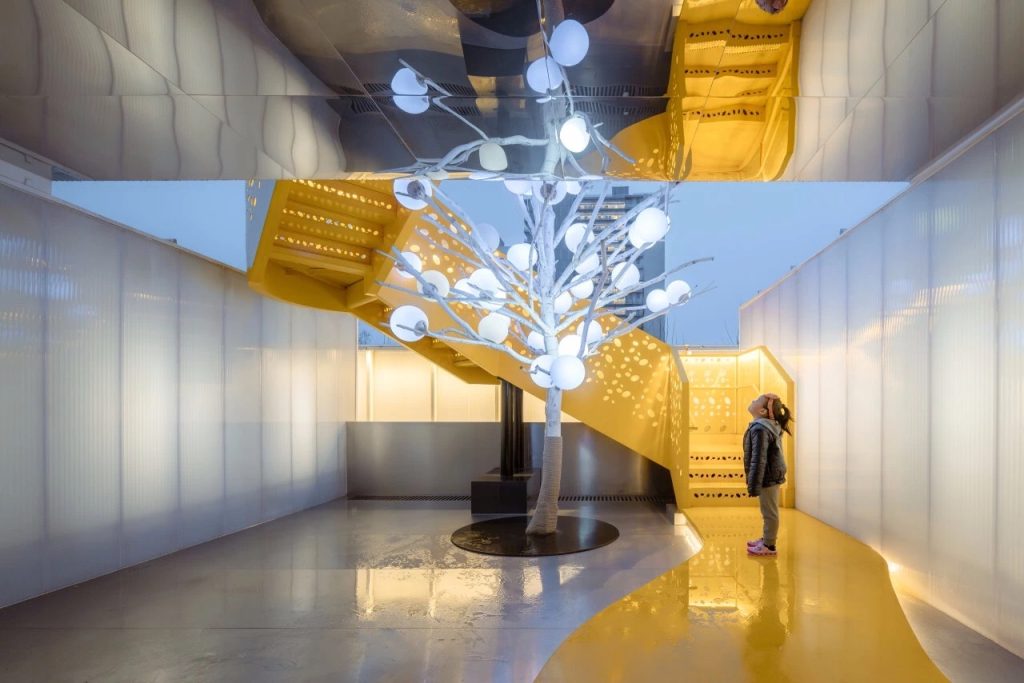Polycarbonate ceiling panels come in several types, including solid, multiwall, and corrugated options. Polycarbonate offers high impact resistance, excellent light transmission, and protection from UV rays.
Many applications use polycarbonate roofing because it is lightweight and easy to install. Polycarbonate sheets help create modern spaces in commercial and residential projects. People often choose polycarbonate roofing for skylights, patios, and greenhouses.
Polycarbonate panels can withstand harsh weather and provide lasting durability. Polycarbonate roofing also supports energy efficiency in many applications.
UV-protected panels and polycarbonate sheets maintain clarity and strength over time. Polycarbonate ceiling panels bring versatility and style to various applications because of these features.
Types of Polycarbonate Ceiling Panels

Solid Polycarbonate Panels
Solid polycarbonate panels have a single, flat layer. These panels offer high impact resistance and excellent clarity. Many people use solid polycarbonate sheets for skylights and interior ceilings.
The panels allow natural light to pass through while blocking harmful UV rays. UV-protected panels help maintain transparency and strength over time. Solid polycarbonate ceiling panels create a sleek, modern look in many construction applications.
Multiwall Polycarbonate Panels
Multiwall polycarbonate panels contain multiple layers with air gaps between them. These panels provide strong insulation and energy efficiency. Multiwall polycarbonate panels reduce heat loss and help control indoor temperatures.
The structure gives the panels extra strength and rigidity. Many greenhouse roofs and commercial buildings use multiwall polycarbonate sheets. UV-protected panels in this category resist yellowing and maintain their features for years.
Corrugated Polycarbonate Panels
Corrugated polycarbonate panels have a wavy or ribbed surface. This design increases strength and helps shed water easily. Many people use corrugated polycarbonate sheets for polycarbonate roofing in patios, carports, and sheds.
The panels offer good light transmission and resist impacts from hail or debris. UV-protected panels in this style keep their color and clarity even after long sun exposure. Corrugated polycarbonate panels work well in outdoor applications that need durability.
Specialty Polycarbonate Panels
Specialty polycarbonate panels include textured, colored, or patterned sheets. These panels add unique design elements to ceilings and walls. Some specialty polycarbonate sheets diffuse light for a softer effect.
Others provide privacy while still allowing light to enter. Many architects choose specialty polycarbonate panels for creative polycarbonate roofing projects. UV-protected panels in this group maintain their appearance and features in demanding environments.
Polycarbonate Panel Features Comparison

Light Transmission
| Panel Type | Light Transmission | Typical Applications |
|---|---|---|
| Solid | Very high | Skylights, interior ceilings |
| Multiwall | Moderate to high | Greenhouses, commercial buildings |
| Corrugated | High | Patios, carports, sheds |
| Specialty | Varies (diffused, colored, patterned) | Decorative ceilings, privacy panels |
Solid polycarbonate panels allow the most natural light. Multiwall panels provide good light but also diffuse it. Corrugated panels offer bright spaces for outdoor polycarbonate roofing. Specialty panels can soften or color the light for unique effects.
Strength and Durability
- Solid polycarbonate panels have the highest impact resistance.
- Multiwall panels combine strength with rigidity due to their layered structure.
- Corrugated panels resist impacts from hail and debris, making them ideal for outdoor polycarbonate roofing.
- Specialty panels offer strength based on their base material and design.
Polycarbonate panels withstand harsh weather and physical impacts. Many applications require this level of strength for safety and longevity.
Insulation and Energy Efficiency
| Panel Type | Insulation Level | Energy Efficiency Benefit |
|---|---|---|
| Solid | Low | Minimal insulation |
| Multiwall | High | Excellent thermal insulation |
| Corrugated | Moderate | Some insulation, mainly for sheds |
| Specialty | Varies | Depends on texture and thickness |
Multiwall polycarbonate panels excel at reducing heat loss. They help maintain comfortable indoor temperatures. Polycarbonate roofing in greenhouses and commercial spaces often uses multiwall sheets for this reason.
Weight and Installation
- Solid polycarbonate panels are heavier than other types but still lighter than glass.
- Multiwall panels are lightweight and easy to handle.
- Corrugated panels are the lightest, making installation quick for polycarbonate roofing.
- Specialty panels vary in weight depending on design.
Lightweight polycarbonate sheets simplify installation. Many installers prefer polycarbonate roofing for this reason.
Cost
| Panel Type | Relative Cost | Notes |
|---|---|---|
| Solid | High | Premium clarity and strength |
| Multiwall | Moderate | Good balance of features and price |
| Corrugated | Low | Budget-friendly for many applications |
| Specialty | Varies | Depends on custom features |
Corrugated polycarbonate panels offer the most affordable option. Specialty panels may cost more due to unique designs.
Aesthetics
- Solid polycarbonate panels create a sleek, modern look.
- Multiwall panels provide a clean appearance with visible structure.
- Corrugated panels add texture and industrial style to polycarbonate roofing.
- Specialty panels offer creative options with colors, patterns, or textures.
Architects often choose specialty or solid panels for visual impact. Polycarbonate ceiling panels enhance both function and style in many applications.
Choosing Polycarbonate Ceiling Panels
Light and Design Needs
Every project has different lighting goals. Solid panels let in the most sunlight, which works well for bright spaces. Multiwall panels diffuse light, creating a softer look. Corrugated panels provide strong light but add texture to ceilings. Specialty panels offer colored or patterned effects for creative designs. Polycarbonate roofing gives architects many choices for both style and function.
Insulation and Comfort
Multiwall polycarbonate panels provide the best insulation. These panels help keep indoor temperatures steady. Solid panels offer less insulation but still block UV rays.
Corrugated panels give some insulation, which suits outdoor areas. Polycarbonate roofing in greenhouses and offices often uses multiwall sheets for energy savings.
A table can help compare insulation:
| Panel Type | Insulation Level |
|---|---|
| Solid | Low |
| Multiwall | High |
| Corrugated | Moderate |
| Specialty | Varies |
Durability and Maintenance
Polycarbonate panels resist impacts from hail and debris. Solid panels have the highest impact strength. Corrugated panels also handle tough weather well.
Multiwall panels last for years with little care. Polycarbonate roofing needs only basic cleaning to stay clear and strong. Specialty panels keep their look with regular maintenance.
Budget Considerations
Project budgets affect panel choices. Corrugated polycarbonate roofing costs the least and fits many outdoor applications. Multiwall panels offer good value for insulation and strength.
Solid panels cost more but give a modern look and top clarity. Specialty panels may cost extra for custom colors or textures. Polycarbonate roofing gives options for every price range.
Conclusion
Each polycarbonate ceiling panel type offers unique benefits. Solid panels provide clarity and strength. Multiwall panels improve insulation. Corrugated panels work well for outdoor spaces.
Specialty panels add creative design options. Readers should compare these features to their project needs. For the best results, they can consult a supplier or request samples. Informed choices help create safe and attractive spaces.
Partner With Facaplex For High Quality Polycarbonate Ceiling Panels
Transform your spaces with Facaplex polycarbonate ceiling panels—where innovation meets elegance. Experience lightweight strength, soft natural lighting, and sleek modern appeal in every design. Our customizable panels bring efficiency, durability, and visual impact together. Let Facaplex help you create ceilings that don’t just cover spaces but define them with clarity and style.
